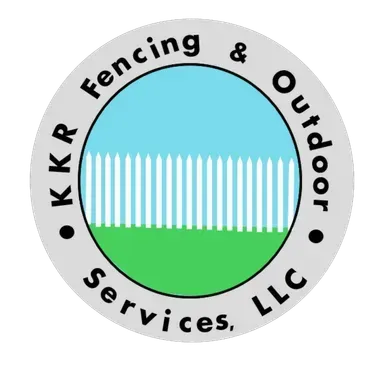How to Safely Prepare Your Deck for Winter in Western New York
Key Takeaways
- Inspect thoroughly - Check every board, railing, and support for damage and make repairs before winter amplifies small problems
- Clean completely - Remove all debris that traps moisture and promotes mold growth between boards and along edges
- Seal properly - Apply quality sealant to create a waterproof barrier against snow melt and freeze-thaw damage
- Protect furniture - Store or cover outdoor items to prevent snow damage and extend their lifespan
- Remove snow safely - Use plastic shovels at proper angles to clear snow without scratching or gouging surfaces
- Choose de-icers carefully - Avoid rock salt and opt for calcium-based products that won't damage deck materials
Why Western New York Decks Need Special Winter Care
Buffalo gets more than 90 inches of snow annually, with some lake-effect storms dropping several feet overnight. But it's not just the snow volume that damages decks—it's what happens when temperatures swing from the bitter cold to brief thaws throughout the season.
Here's what your deck endures each winter:
- Freeze-thaw cycles: Water seeps into tiny cracks, freezes, expands, and forces materials apart, leading to splitting and warping
- Moisture accumulation: Snow piles create constant dampness that promotes rot in wooden decks and staining in composite materials
- Salt and chemical exposure: De-icers used on walkways and stairs corrode metal hardware and can etch deck surfaces
- Heavy snow loads: Accumulated snow adds significant weight that can stress supports and loosen connections
Wooden decks absorb moisture at joints and end grains, making them particularly vulnerable to rot. Composite decks fare better overall, but trapped debris under snow can cause discoloration, and salt exposure can pit the surface over time. Railings and stairs face the harshest conditions since they're exposed to both direct weather and chemical runoff from de-icing efforts.
Complete Deck Inspection and Repair Checklist
Start your winter prep with a thorough inspection while the weather's still decent. Walk every square foot of your deck in good daylight, and bring a screwdriver to probe suspicious areas.
What to Check and Fix:
| Area | What to Look For | Action Needed |
|---|---|---|
| Deck boards | Loose nails, soft spots, cracks, splinters | Tighten fasteners, replace rotted sections, sand rough areas |
| Railings & posts | Wobbling, loose connections, cracked balusters | Secure with galvanized hardware, replace damaged pieces |
| Stairs | Loose treads, weakened stringers, shaky handrails | Reinforce connections, replace worn components |
| Underneath | Joists, beams, ledger boards for water stains, sagging, insect damage | Replace compromised structural members immediately |
| Hardware | Rust, corrosion, stripped screws | Replace with stainless steel or galvanized fasteners |
Pay special attention to any soft spots—these indicate water damage that will only worsen once freeze-thaw cycles begin. For wooden decks, fill small cracks with exterior wood filler and sand smooth. Document everything with photos so you can track problem areas year to year.
If you discover significant structural issues like sagging beams or extensive rot, bring in a local contractor who understands Western New York building codes and snow load requirements. Finish all repairs by mid-October to allow materials to settle before winter arrives.
Deep Cleaning Your Deck the Right Way
A clean deck isn't just about appearances; it's about removing the debris that traps moisture and accelerates decay. Leaves, dirt, and organic matter create the perfect environment for mold and mildew, especially in the damp areas between boards and along railings.
Step-by-Step Cleaning Process:
- Sweep thoroughly using a stiff broom or leaf blower, paying attention to gaps between boards where debris hides (15-20 minutes)
- Scrub with cleaning solution using warm water mixed with mild dish soap or a dedicated deck cleaner, working in sections with a soft-bristle brush (30-45 minutes)
- Pressure wash carefully if needed, using 1,500 PSI or less and keeping the nozzle at least 12 inches from the surface, always spraying with the grain on wood decks (20-40 minutes)
- Treat stubborn stains with a solution of one part bleach to three parts water for mildew, letting it sit 10 minutes before rinsing thoroughly
- Allow complete drying for 48-72 hours before sealing—use fans if Western New York's cloudy fall weather isn't cooperating
For composite decks, skip harsh chemicals and stick with soap and water or cleaners specifically formulated for synthetic materials. The key is patience—rushing the drying process leads to sealer failure, which defeats the entire purpose of winter prep.
Sealing and Protecting Your Deck
Sealing creates a waterproof barrier that's essential for surviving Western New York winters. Before you buy anything, test your current protection by sprinkling water on the deck boards. If the water beads up, you're good for another year. If it soaks right in, it's time to reseal.
Choosing the Right Sealant:
- Oil-based penetrating sealants work best for wood decks, soaking deep into the grain to repel moisture from the inside out. These take longer to dry but provide superior protection against freeze-thaw damage.
- Water-based sealants dry faster with less odor and work well for most applications, though you may need an extra coat for full protection.
- UV protectants are ideal for composite decks, which don't need heavy sealing but benefit from protection against sun damage and fading.
The best time to seal your deck in Western New York is late September through mid-October, after the rainy season but before frost arrives. Apply sealant in temperatures between 50-80°F, working in thin, even coats with a brush or roller following the wood grain.
For wooden decks, pay extra attention to end grains, joints, and edges where water penetration happens first. Two coats typically suffice, with 4-6 hours of drying time between applications. Composite decks need only a light UV protectant applied with a cloth, buffing away any excess to avoid streaking.
Winter Maintenance Tips for Different Deck Types
For Wood Decks in Buffalo:
Wood demands the most attention in harsh winters. After cleaning and sealing, caulk any gaps with flexible silicone to block water entry at joints. Apply extra sealant to railings since ice and salt exposure hit them hardest. Consider a salt-resistant finish on stairs and high-traffic areas where de-icers get tracked around.
For Composite Decks:
These low-maintenance materials still need some winter prep. Check that all fastening clips and screws are tight—composites expand and contract with temperature changes, so proper spacing is crucial. Clear drainage paths to prevent water pooling during thaws, and use only calcium chloride or calcium magnesium acetate for de-icing, never rock salt.
Protecting Furniture and Accessories:
Store what you can indoors. For items staying outside, use fitted, waterproof covers secured against winter winds. Elevate furniture slightly off the deck to allow airflow and prevent moisture from being trapped underneath. Empty planters completely, clean and dry all cushions before storing, and bring propane tanks indoors for safety.
Safe Snow Removal and De-icing
When snow arrives, remove it promptly to prevent excessive weight buildup, but do it carefully. Use a plastic shovel held at a 30-degree angle, pushing snow rather than scraping. Never use metal shovels or ice choppers on wood decks—they'll gouge the surface and damage your sealant. For light snow, a soft-bristled push broom works perfectly.
Choose your de-icer wisely. Rock salt damages both wood and composite materials, causing pitting, discoloration, and accelerated weathering. Opt for calcium chloride, calcium magnesium acetate, or sand for traction instead. Apply sparingly and sweep away residue once ice melts to minimize surface contact.
Frequently Asked Questions
When should I start preparing my deck for winter in Western New York?
Begin your deck prep in mid-September to early October, before the first hard frost hits the region. This timing gives you enough warm, dry days to complete cleaning, repairs, and sealing before winter weather makes the work impossible. Starting early also lets sealants cure properly, which typically requires 48-72 hours of dry conditions that become harder to find as fall progresses.
Can I use a pressure washer on my composite deck?
Yes, but you need to use it carefully with the right settings to avoid damage. Keep the pressure at or below 1,500 PSI, hold the nozzle at least 12 inches from the surface, and keep it moving constantly to prevent streaking or etching. A fan-tip nozzle works better than a concentrated stream, and always spray in the direction of the deck boards rather than across them to avoid forcing water into seams.
How often should I reseal a wooden deck in Buffalo?
Plan to reseal every 1-2 years depending on your deck's exposure and the quality of sealant used. Buffalo's harsh winters with heavy snow and frequent freeze-thaw cycles break down sealants faster than moderate climates. Test your deck each fall using the water bead test—if water soaks into the wood rather than beading up, it's time to reseal regardless of how long it's been since the last application.
Is rock salt safe for de-icing my deck?
No, rock salt (sodium chloride) damages both wood and composite decking materials and should be avoided. It causes wood to dry out and crack, corrodes metal fasteners, and can pit or discolor composite surfaces over time. Instead, use calcium chloride or calcium magnesium acetate, which are much gentler on deck materials while still effectively melting ice.
What should I do if I discover rot during my inspection?
Address rot immediately because it only spreads and worsens over winter. Cut out the entire affected section plus 6-12 inches beyond the visible damage, as rot often extends farther than it appears. Replace with pressure-treated lumber or composite materials, securing with corrosion-resistant fasteners, and seal thoroughly before winter. If rot appears in structural members like joists or beams, consult a contractor since these may require professional repair to ensure safety.
Final Thoughts
Preparing your deck for Western New York's brutal winters takes a weekend of focused work, but it pays off with years of extended deck life and safe outdoor space. Start with a thorough inspection and repairs, deep clean to remove moisture-trapping debris, seal properly with the right products for your material, and set yourself up for easy winter maintenance.
Don't wait until snow's in the forecast: grab a free afternoon this fall and knock out these tasks. Your spring self will thank you when you're relaxing on a solid, well-maintained deck instead of scheduling costly repairs.
Need professional deck repair or winter prep help in Western New York? Get a free estimate on deck construction, repairs, and winterization services that protect your investment year-round.
References:
https://www.rawlinspaints.com/blog/how-to-clean-decking-in-5-easy-steps/
https://www.facilitiesnet.com/maintenanceoperations/tip/Snow-Removal-and-Deicing-Tips-for-Parking-Structures--50748




